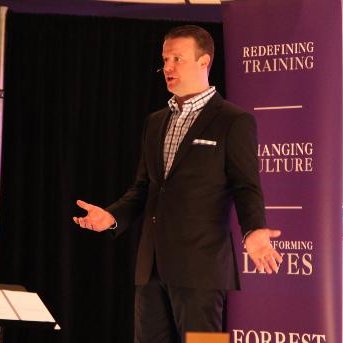How To Grow Your Business Treasures
…Even Beyond the general Recession Proof Measures
Are you ready to face the recession and come out of it on top?
Then it’s time to assess your business treasures.
But how to grow your business treasures?
And what are they?
There are roughly three categories of ‘business treasures’ on the forefront of our mind.
So let’s dive into those first.
And then, be sure to read on for the important ‘hidden’ treasures.
Business Treasures
The first category of business treasures contains matters of finance:
And when all these things are well taken care of, that could then lead to a higher order balance.
But how can you create new capital from thin air when current sales are low? How can you grow revenue, reduce costs and maximize profits when a recession is lurking? And how then can you be sure that your business finances are well-balanced and turning profits 24/7/365?
(You may already find new inspiration to begin resolving these questions in this article: https://c-suitenetwork.com/advisors/how-to-ethically-create-new-capital-from-thin-air/)
These questions need to be on top of the business mind, day in day out. But it’s not enough. They also ask for a supportive infrastructure through technologies and other assets.
With the increasing rise of new Fin Tech solutions and Automated Sales Processes among other things it thus makes sense to look at the second category.
The second category of business treasures contains matters of technology:
And when all these things are well taken care of, that could then lead to a higher percentage in conversion rates.
But many businesses are increasingly falling victim to the whims of big tech algorithms. Because when they’re implementing strategies to use these technologies, there’s an increasing list of conditions they have to comply to. And those conditions are not always in the best interest of the businesses that use Big Tech, despite they have to pay them more than just dollars and data.
How then to become independent from those Big Tech companies while still making wise use of the technologies available? And how can you secure streamlined online processes without falling victim to technology fall outs?
(For learning more about becoming Big Tech independent you should read this uttermost important blog post: https://smplg.com/a/1262723/roadmaptomoneybp)
These questions need to be on top of the business mind that wants to be recession proof. But it’s not enough. They also ask for security measures and diversifying the risks through different channels.
With the rise of Blockchain technology, new Cryptocurrencies and all kinds of newly secured software solutions among other things it thus makes sense to look at the third category.
The third category of business treasures contains matters of daily operations:
- Invoicing and administration
- Analytics and Metrics
- Customer Support and Client Retention
- Community Engagement and Corporate Social Responsibility
And when all these things are well taken care of, that could then lead to more streamlined workflows, customer loyalty, referral networking, social continuity and time and energy saving new opportunities.
But all this isn’t necessarily enough for becoming recession proof. There’s something beyond these top of mind recession proof measures for Finance, Technology and Operations.
We thus have to dig deeper for other treasures in order to understand why and how it could all work better. Let’s call those the ‘hidden’ treasures for business growth.
You’re probably already aware of them somehow, but perhaps not yet believing completely in their importance. That’s why it could pay dividends to read on.
Hidden Treasures
There are roughly three categories of ‘hidden treasures’ in the deeper parts of our mind. We hear a lot about them. But they’re not always well understood.
Those treasures are unlocked by conscious choice though. That’s why we’ll go over some of those choices here.
You could then decide to make new choices for unlocking more of your hidden treasures when wanted, needed or desired.
The first (relatively well-known) unlocking category is Coaching and Consulting.
Especially the coaching industry is booming these days. It happens in all sectors and industries, for all jobs, roles, niches and subcategories.
But not all coaches are equally good in what they do. Many just followed a short course and then call themselves a coach without real life coaching experience or a method that works.
Others come from real experience though. They have built their coaching practice on years of work and deep values. Their coaching offer exudes trust and power to unlock hidden treasures. (If, for example, you’re involved in property management then here’s a great example of how you can reach Business Growth through values-driven coaching: https://giperskine.com/values-driven-coaching)
Consulting has been around for a long time. There are many big consulting firms. And there are even more boutique or sole-proprietorship consultants out there.
Here goes too that they’re not all equally good. And many of them make mistakes without actually addressing the mistakes that the businesses they’re consulting on are making.
Fortunately it’s okay sometimes to make mistakes as long as we learn from them. You could call it failing forward, or making constructive failures.
I recently found a book that actually bares this in the title. It’s about Consulting on the 5 biggest mistakes in business and life and how to avoid letting them shut you down.
In the book the author talks about The DONNEmethod® and it’s beginning with these Crucial Questions:
- Why is the difference between strategic and tactical planning so significant to distinguish?
- What can I do to make sure nothing is missed or overlooked?
- When do I implement changes and where do I make those changes for the most impact?
- Which sequence maximizes the contribution of all our planning and strategizing efforts?
And the one to begin with:
- How do I avoid meddling with what’s already working and making things worse?
The author will then address solutions to problems that are implied by the above Crucial Questions. You can get the book that’s called ‘The Failure Factor’ by Justin Donne here: https://cashdrop.biz/d/75E2iJ1t0g
The second (less well-known) unlocking category is Energy Clearing and Energy Management
There’s big talk about the energy transition that we’re in. But energy is not only about oil, gas, solar or electric power. It’s also about our own personal energy management.
Personal energy often gets depleted by the technologies we’re using and by the accompanying lifestyles. Then it’s wise to be aware of that and do something about it. (That’s why >this report< could be an interesting read to learn more about why clearing your personal energy atmosphere is important.)
On a different level, it’s also important to clear out your environment for optimal work and living conditions. That asks for personal leadership to begin with. (This article might shed more light on success with your energy management from a leadership growth perspective: https://c-suitenetwork.com/advisors/6-new-steps-to-new-leadership-success/)
Energy Clearing and Energy Management thus begins within and around oneself.
You can do this by installing new habits, getting rid of bad influences, and by creating healthier life and work environments.
Which brings us to…
The third (quite well-known but not always well understood) unlocking category is Company Culture and Integrative Wellness
There’s big talk about company culture. Yet, it’s complex to create and maintain a healthy one, especially these days with the various remote, work-at-home, freelance and hybrid work modalities of employees. (This post might give you some deeper insight in how to handle this: https://www.linkedin.com/feed/update/urn:li:activity:6933064522366652416)
That’s why this asks for a form of leadership that’s immediately coupled with practical implementation. You could call this Inspirational Leadership (on which you can read more here: https://c-suitenetwork.com/advisors/inspirational-leadership-in-trying-times-of-crisis-how-to-elevate-your-company-culture/) because inspiration immediately gives energy for action.
This means that not only the top of mind measures (as mentioned above) are highlighted in the everyday business endeavors but that each and every day there’s time scheduled to receive and give inspiration to one another. This can enhance creativity, productivity and efficiency, for it invigorates the people to give their best. Which in turn could help in reducing burnouts, sick leaves or resignation because of other perceived-as-better opportunities.
What could also help in amplifying this even further is when the business goals become aligned with greater goals that actually serve all humankind. (You can read more on this here: https://www.linkedin.com/feed/update/urn:li:activity:6940706022013480960) Then the company culture becomes embedded in a wider notion of integrative wellness. And although that begins with personal well-being, it’s then also aligned with the perception of a world that’s worth again to live in, because we then more deeply understand that we’re in it together.
But it also asks for a new form of presence. And that presence is shaped these days both through personal appearance in real life as through online profiles. For this, Thought Leadership is one of the pioneering factors to grow your hidden business treasures.
To be seen as a leading edge thought leader in your industry, that indeed can go a long way.
One doesn’t just call oneself a Thought Leader though. But if you’re interested in creating and building a Thought Leader profile that’s seen and recognized by 100M+ followers combined, then be sure to >visit this page<. There you can also connect with other great Thought Leaders.
Now, to bring it all together: How to grow all of your business treasures …even beyond the general recession proof measures?
Let’s consider one last thing. It’s on an encompassing concept that not many people talk about, yet it’s becoming increasingly important to understand.
Omnibenevolence
In this article we’ve used words, concepts and ideas that transcend the top of mind business treasures that most people talk about. We also went deeper into the ‘hidden’ treasures which are perhaps not completely unknown but they’re at least not that much on the forefront of discussions about business, especially when those discussions are about how to become recession proof.
But what do you think? Do these different layers of treasures have their place in your company or organization? Or could there be more room for improvements in any area?
It can be overwhelming to think and take care of all of them. That’s why it might help to have an encompassing concept captured in one word. That word can then be explained on a one-page Mind Map that you can have readily available, as suited to your unique situation, for your specific needs.
There you can find more information on how to get your hands on that Mind Map.
For now, thank you for reading this article.
Sincerely,
Maurits van Sambeek, MA
Founder, The Omnibenevolence Council™


















